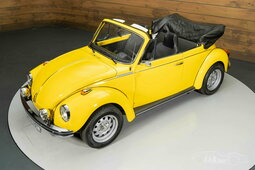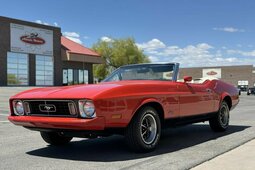The United Kingdom has a long tradition of getting involved with rather mad engineering projects because - for some reason - British engineers have historically tended to be rather good at this sort of thing.
Say “hello”, then, to Ian Northeast - an engineer previously involved with the Eurofighter-engined Bloodhound land speed project, who also had - and still has - designs on a similar record, albeit as a driver.
Northeast’s plan looked simple. In 2018, he would break the 200 miles per hour land speed record in the Bonneville Speed Week’s ‘production’ class and join the likes of compatriots Malcolm Campbell and Andy Green in the land speed record history books.
Time and his choice of car ensured that things wouldn’t exactly be simple, though. After all, we don’t like to make things that easy for ourselves in Britain, do we?
Given Northeast’s association with the 1,000 mph Bloodhound, it’s easy to assume that he would invest heavily in a race car that bears little-to-no relevance to its road-going counterparts to pursue his endeavour across the salt flats of the former Great Salt Lake basin… except he didn’t…
He really didn’t.
In fact, he chose a “somewhere above stock but definitely below bespoke” classic Jensen CV8 from the early 1960s, a GT designed to swan around Europe and deafen the continent’s well-heeled cities with its rumbling 6.2-litre Chrysler block.
A competitor to the Aston Martin DB5 and Jaguar E-Type this British-built fibreglass coupé very much is, but “The World’s Fastest Jensen” and a land-speed record breaker? Well, more of that later.
“In my mind, land speed records are the only form of racing that’s completely true to the original spirit of motorsport” - Ian Northeast
Invoking the “men in sheds spirit that’s so synonymous with this small, oft-rain soaked island in the North Sea, the biggest modifications made to the Jensen by Northeast and his team comprising friends and like-minded speed enthusiasts, were a roll cage, a fire extinguisher system, and a parachute that could be deployed to add drag and slow the car down.
A DIY-rear wing to add *some* downforce was also developed, and Adrian Newey would not be lying awake at night, wracked with worry.
Whilst “woefully, comically unprepared” at Bonneville in 2018, Northeast still managed to reach 148 mph on his and the Jensen’s officially-timed five-mile run, despite being plagued by a short-circuiting ECU, clutch problems, and a five-speed Jaguar GETRAG gearbox that ended up “smashed into 1,000 pieces.”
Despite falling short, Northeast’s belief in his then-60-year old car was unshaken. If it was “rock solid” at the highest speed he could manage, then surely some further modifications would ensure the Jensen smashed its 200 mph target next time out… yet again, though, next time out would not prove easy.
The team skipped Bonneville Speed Week in 2019, and the COVID pandemic put a stop to any participation from 2020 to 2022. Yet after an almost-five year hiatus, the Jensen is back for 2023, albeit at El Mirage; a 1.3-mile long speedrun course on the salt plains of the dried-up El Mirage lake in the midst of California’s Mojave desert.
Alongside the site for a potential record to be broken over the weekend of November 11th - 12th, the Jensen has also changed. Significantly.
On the surface, everything has been done in the name of improving aerodynamic efficiency, and the smoothed-off front end along, DIY lip-spoiler, and disc wheel hubs come together to invoke a design not too dissimilar to that of a scaled-down, streamliner train of the 1930s.
Amidst the preparation of his trip to El Mirage, Northeast explained to Dyler.com that whilst visually different to the car he took to Bonneville in 2018, the biggest alterations made to the Jensen under the skin were by far the most significant.
“The CV8 was made from 1962 to 1966 and designed for a top speed of around 130 mph, not the 150 I had it up to, and definitely not the 200 I had - and still have - in mind!” - Ian Northeast
“When I got under the car in either 2019 or 2020, that’s when I realised I needed to make some changes,” he says. “In 2018, I literally took a standard car, lowered the front, jacked up the rear, and put a wing I’d made on the back.
“The CV8 was made from 1962 to 1966 and designed for a top speed of around 130 mph, not the 150 [mph] I had it up to, and definitely not the 200 [mph] I had - and still have - in mind. Yet it remained absolutely rock solid at Bonneville and considering the nature of the design against more modern vehicles, it was absolutely brilliant. The designers at Jensen back then did a really good job.
“In 2019 or 2020, we got underneath it and I noticed there was some wear and tear and age-related chassis rot - when I bought it, it had already done 250,000 miles!
“The original leaf springs and live axle aren’t exactly a stable platform for 200 plus mph, and whilst under the car, I noticed one leaf spring been chewed down completely, whilst the other one had about 6 millimetres left of give it - that would have made the car stupidly dangerous, as opposed to normally dangerous.
“Had it failed on the salt, the accident would have looked quite spectacular, at least from the outside.”

To improve the CV8’s stability, Northeast, now fast-becoming a cult hero on the speedrun circuit, replaced the leaf springs with a four-link rear suspension, and took to his engineering drawing board to implement further improvements.
“We strengthened the chassis to minimise the rot, and I re-designed the front suspension which allowed me some camber adjustments courtesy of a king pin and forearms. Ultimately, everything is still stock, but beefed up a bit.”
If there’s further proof of the Jensen being “still stock, but beefed up a bit” then it’s the engine. The 6.2-litre MOPAR V8 it shared with the Chrysler 300H is still original, albeit with a turbocharger bolted on.
“These big lazy V8s are probably not the best thing for racing, as they take time to reach their powerband and the components were not made to withstand being held at their absolute limit for so long,” Northeast continues. “The engine has been pretty reliable, but it’s the gearbox that proved tricky.”
“We smashed the original five-speed gearbox to pieces at Bonneville. I remember during our final run, the car wouldn’t get off the start line, then all of a sudden, it made this horrible grinding noise before grinding to a halt and all this oil appeared underneath - the gearbox casing had literally shattered!
“Once I’ve finished with this land-speed record, a third life awaits the car. I want to soften the suspension, downtune the engine, remove the roll cage, re-build the interior, and start using it again as something to enjoy daily” - Ian Northeast
“I knew that the original gearbox wouldn’t hold up, so I looked for something that could. The manual gearbox from a Dodge Viper seemed a pretty good fit as they can handle around 800bhp and 400 pound-feet of torque, and we have something like 600bhp and 640 lb-ft of torque. They’re also pretty cheap in America, which is handy as I’m doing everything on a budget here.
“Anyway, it turns out that a Viper’s gearbox still couldn’t handle our big, lazy lump of a V8, so I bought a Tremec six-speed T-56 gearbox to do the job and so far, it has.
“Ultimately, though, another reason for keeping it close to stock is because once I’ve finished with this land-speed record, a third life awaits the car. I want to soften the suspension, downtune the engine, remove the roll cage, re-build the interior, and start using it again as something to enjoy daily.”
Before the Jensen returns to civilian life in the near future, Northeast is keen to talk about the importance of the upcoming El Mirage run during the course of the November 11 - 12 weekend. Evidently, the thrill that comes with driving quickly is part of the attraction, but it’s more than that. For the Band of Brothers-like team involved with the project, land speed records are a throwback to motorsport of yore.
“In my mind, land speed records are the only form of racing that’s completely true to the original spirit of motorsport,” says Northeast. “At the end of the day, there’s very little glory in it as you’re racing for a scrappy piece of paper that tells you how fast you went, but it’s that piece of paper everyone is there for.
“On one hand, you have teams who have spent millions on their cars, and on the other, you have teams who’ve spent hardly anything. We’re somewhere in the middle, I think.
“I have to say, that one of my favourite memories at Bonneville was an old Suzuki 125 motorbike with a number slapped on the side, and that was about it - I’d be amazed if the guys who entered it spent more than $300 USD, but everyone was cheering them on for having a go, and that’s what motorsport should be about…”
Can Ian Northeast and his Jensen CV8 set the speed record at El Mirage on November 10 - 11? Well, tune in here over the course of the weekend to find out, and be sure to join us for Part 2 of this story coming soon!
The Jensen CV8 is one of many iconic British classic cars from the 1960s. To browse the hundreds of these highly-desirable vehicles we have listed from this era, click these yellow words.
---
Discover your dream car within our Car Categories, or explore our Classic Passion Shop to uncover thrilling items from our associates!












